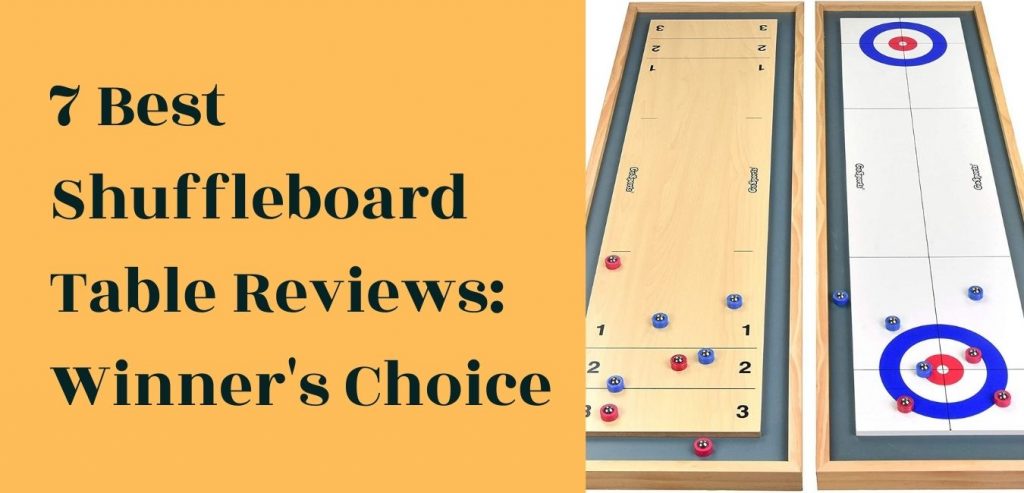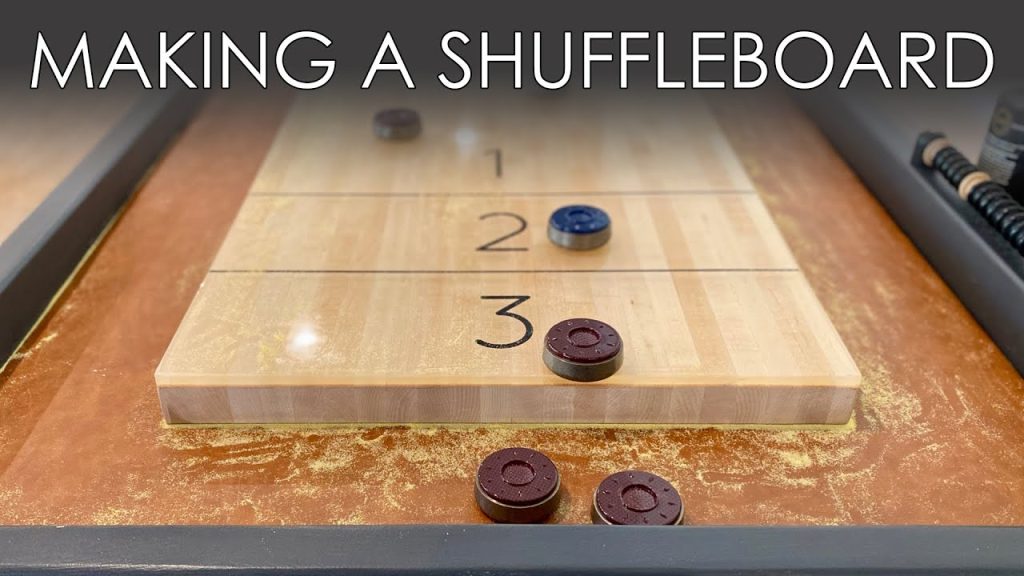Building a shuffleboard court can be a fun and rewarding project. It is a great way to enhance your backyard and offer entertainment.
Creating your own shuffleboard court isn’t as complicated as it might seem. With a few materials and some basic tools, you can have a professional-looking court in no time. This guide will walk you through the steps to build a shuffleboard court right at home.
Shuffleboard is a game enjoyed by many, and having your own court means endless fun for family and friends. Whether you are a novice or an experienced DIY enthusiast, our instructions will make the process simple and straightforward. Let’s dive into the details and get started on your shuffleboard court today!
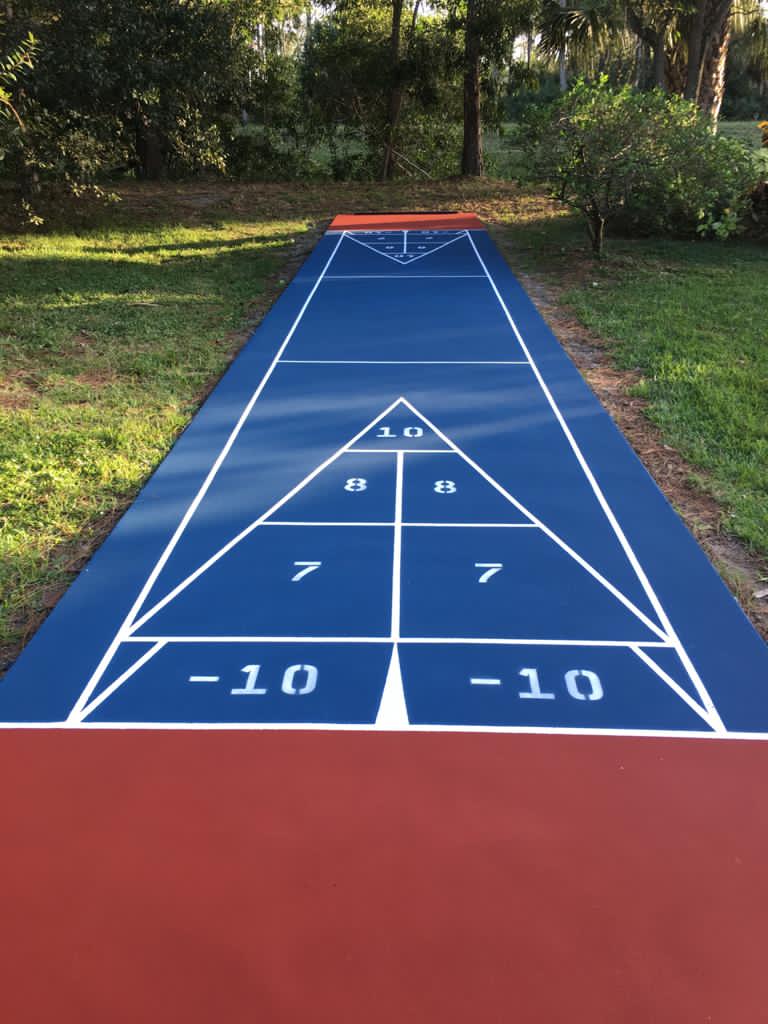
Credit: armorcourts.com
Choosing The Location
Choosing the perfect spot for your shuffleboard court is crucial. The right location ensures you enjoy the game to its fullest. Several factors come into play, such as whether you want an indoor or outdoor court and the amount of space required.
Indoor Vs Outdoor
Deciding between an indoor and outdoor court is essential. An indoor court offers weather protection and year-round play. It’s ideal if you have a large basement or garage.
An outdoor court, on the other hand, allows for a more natural setting. You can enjoy fresh air and sunlight. Just ensure the surface is level and has good drainage.
Space Requirements
Space is a critical factor in building a shuffleboard court. For a standard court, you need at least 52 feet in length and 10 feet in width. This gives enough room for the game.
If space is limited, consider a smaller court. Ensure there is ample room around the court for players to move freely.
Remember, the more space you have, the better the playing experience will be. Choose a location that meets these requirements for an enjoyable game.
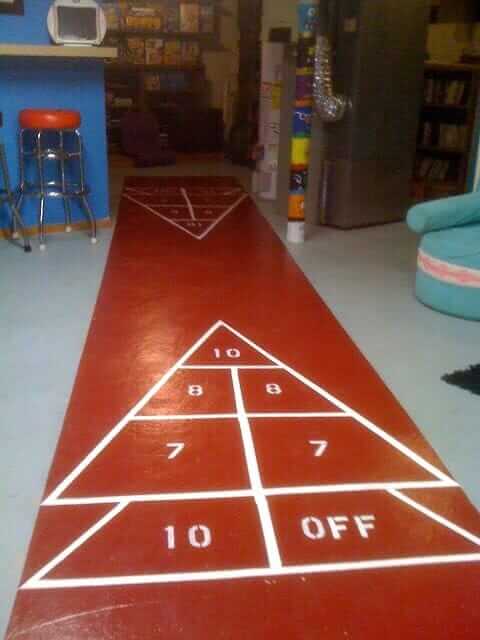
Credit: retrorenovation.com
Gathering Materials
Creating a shuffleboard court starts with gathering the right materials. This step is crucial. It ensures a smooth construction process and a durable court. Let’s break it down into essential tools and surface materials.
Essential Tools
First, gather the essential tools for building your shuffleboard court. You will need a measuring tape to ensure accurate dimensions. A shovel is necessary for digging and leveling the ground. A tamper helps compact the soil. This creates a stable base. A level ensures the court is even. You will also need a wheelbarrow to transport materials easily. Don’t forget a broom for cleaning the surface during construction.
Surface Materials
Next, focus on the surface materials. Gravel is the base layer. It provides drainage and stability. Sand is laid over the gravel. This creates a smooth playing surface. Concrete mix is another option. It offers a more permanent and durable surface. Paint is required for marking the court lines. Use weather-resistant paint for longevity. Lastly, a sealant protects the surface. It keeps the court looking great for years.
Preparing The Ground
Creating a shuffleboard court in your backyard is a fun project. The first step is to prepare the ground. This ensures a smooth and level playing surface. Proper preparation helps avoid future problems. Follow these steps to get started.
Clearing The Area
Start by choosing a flat area in your yard. Clear all debris like rocks, sticks, and leaves. Remove any plants or grass in the designated area. Use a shovel to dig up the top layer of soil. Ensure the area is clean and free of any obstacles.
Leveling The Ground
Once the area is clear, focus on leveling the ground. Use a long piece of wood or a level to check for any uneven spots. Fill in low areas with soil. Remove excess soil from high spots. Continue this process until the ground is level.
After leveling, compact the soil using a tamper or roller. A firm and even surface is key for a good shuffleboard court. This step ensures the court stays in good condition for years.
Building The Frame
Creating a shuffleboard court starts with building a sturdy frame. This is a crucial step. The frame holds the court together. It must be strong and well-constructed. Let’s explore the process.
Choosing The Right Wood
First, select the right wood. Not all wood types are equal. You need wood that can handle outdoor conditions. Pressure-treated lumber is a good choice. It resists rot and insects. Cedar is another option. It is naturally resistant to decay.
Measure the area for your court. Purchase wood that fits your measurements. Ensure the wood pieces are straight. Warped wood can cause problems. Quality wood ensures a durable frame.
Constructing The Frame
Next, construct the frame. Lay out the wood pieces on the ground. Form a rectangle. Use a tape measure. Make sure the sides are equal. This will ensure a perfect rectangle.
Secure the corners with screws. Use galvanized screws for durability. They do not rust. Add cross supports. These will strengthen the frame. Space the supports evenly. Use a level to check for evenness. An even frame is essential.
Finally, check the measurements again. Ensure the frame is square. Any mistakes now will affect the entire court. Take your time. A well-built frame is the foundation of a great shuffleboard court.
Laying The Surface
Creating a shuffleboard court can be a fun and rewarding project. One of the most crucial steps is laying the surface. This section covers how to install the base and add the playing surface. Follow these steps carefully to ensure your court is level and smooth.
Installing The Base
First, clear the area of any debris. Use a shovel to remove grass and rocks. Ensure the area is flat. Next, lay a layer of crushed stone. This helps with drainage. Rake the stone evenly across the area. Compact the stone using a tamper. The base should be firm and level. Check the level with a long board and a carpenter’s level. Adjust as needed to ensure a flat surface.
Adding The Playing Surface
Once the base is ready, you can add the playing surface. Choose a durable material like concrete or asphalt. Mix the concrete according to the instructions. Pour the concrete over the base. Use a screed board to spread it evenly. Smooth the surface with a trowel. Let the concrete cure for at least 48 hours. If using asphalt, follow similar steps. Ensure the surface is smooth and level. Once dry, your court is ready for the final touches.
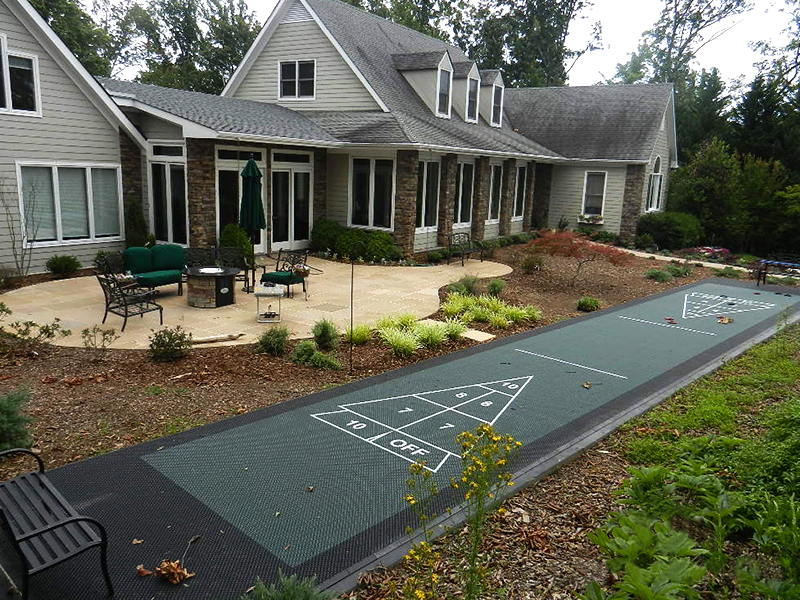
Credit: www.versacourt.com
Marking The Court
Creating the right markings on your shuffleboard court is crucial. These lines and zones guide the game and ensure fair play. Follow these steps to mark your court accurately.
Drawing The Lines
Start by drawing the baseline at each end of the court. This line should be 6 inches wide. Measure 6 feet from the baseline and draw the foul line. Ensure it is parallel to the baseline.
Next, draw the center line. This line runs the length of the court and divides it into two equal halves. Use a chalk line or string for accuracy.
Finally, draw the side lines. These lines run from the baseline to the other end, creating the outer boundaries of the court.
Adding Scoring Zones
The scoring zones are essential for the game. Measure 6 feet from the baseline and draw a line across the court. This is the scoring zone line.
Divide the area between the scoring zone line and the baseline into three sections. Label them with the scores: 7, 8, and 10 points.
Use different colors for each zone to make them clear. This will help players see their targets easily.
Here’s a quick table to summarize the measurements:
| Marking | Distance from Baseline |
|---|---|
| Foul Line | 6 feet |
| Scoring Zone Line | 6 feet |
| 7 Point Zone | 6 to 9 feet |
| 8 Point Zone | 9 to 12 feet |
| 10 Point Zone | 12 to 15 feet |
Take your time to ensure each marking is accurate. Proper markings make the game fair and enjoyable.
Finishing Touches
Once the main construction of your shuffleboard court is complete, it’s time to focus on the finishing touches. These steps will ensure your court is protected and ready for play. In this section, we will cover the final steps to make your court perfect.
Applying Sealant
Applying sealant to your shuffleboard court is crucial. It protects the surface from weather and wear. Before you start, make sure the court is clean and dry. Remove any debris or dust with a broom or leaf blower.
To apply the sealant, use a roller or brush. Apply an even coat across the entire surface. Be careful not to leave any puddles or thick spots. Allow the first coat to dry completely. This could take several hours, depending on the weather.
After the first coat is dry, apply a second coat. This ensures thorough coverage and protection. Allow the final coat to dry for at least 24 hours before using the court.
Setting Up The Equipment
Once the sealant is dry, you can set up your shuffleboard equipment. First, place the scoring triangles at each end of the court. Make sure they are aligned properly. Use a tape measure to ensure accuracy.
Next, set up the center line and the foul lines. These lines help players know where to stand and shoot. Use a chalk line or tape to mark these lines clearly.
Finally, gather your shuffleboard discs and cues. Place them near the court for easy access. Your shuffleboard court is now ready for play!
Maintenance Tips
Maintaining your shuffleboard court is crucial for ensuring its longevity and playability. Regular care keeps the surface smooth and safe for an enjoyable game. Below are some essential maintenance tips to help you keep your shuffleboard court in top condition.
Regular Cleaning
Regular cleaning is vital for a shuffleboard court. Dirt and debris can cause damage and make the game less enjoyable. Here are some steps to follow:
- Daily Sweep: Use a soft-bristle broom to remove leaves and dirt.
- Weekly Wash: Use mild soap and water to clean the surface.
- Dry Thoroughly: Ensure the court is completely dry before use.
Repairing Damages
Even with regular cleaning, your shuffleboard court may get damaged. Prompt repairs are crucial to prevent further damage. Here’s how you can fix common issues:
| Type of Damage | Repair Method |
|---|---|
| Cracks: | Fill small cracks with a concrete filler. For larger cracks, consult a professional. |
| Surface Wear: | Resurface the court with a specialized coating every few years. |
| Water Damage: | Ensure proper drainage around the court to prevent water accumulation. |
By following these maintenance tips, you can keep your shuffleboard court in excellent condition. Regular cleaning and timely repairs will ensure a smooth and enjoyable game for years to come.
Frequently Asked Questions
How Do You Build A Shuffleboard Court?
Building a shuffleboard court involves leveling the ground, laying a concrete slab, and painting the court lines. Ensure proper measurements and materials.
What Materials Are Needed For A Shuffleboard Court?
You’ll need concrete, paint for lines, shuffleboard discs, cues, and a level surface. Consider quality materials for durability.
How Long Is A Standard Shuffleboard Court?
A standard shuffleboard court is 52 feet long and 10 feet wide. Proper dimensions are crucial for gameplay.
Can I Build A Shuffleboard Court Indoors?
Yes, you can build an indoor shuffleboard court. Ensure you have enough space and a smooth, level surface.
Conclusion
Creating your own shuffleboard court can be a fun project. It allows you to enjoy the game at home. Follow the steps carefully to ensure a smooth surface. Choose the right materials for durability. Measure and mark the court accurately.
Paint the lines neatly. Finally, enjoy playing with friends and family. Building the court brings joy and satisfaction. Plus, it adds a great recreational space to your home. Start your project today and enjoy endless fun. Your backyard is about to get a lot more exciting!


